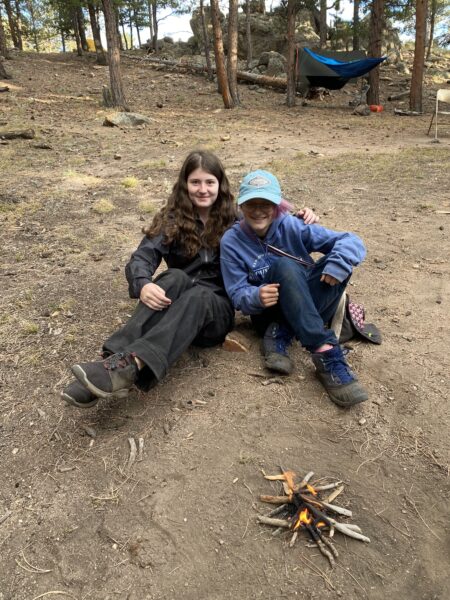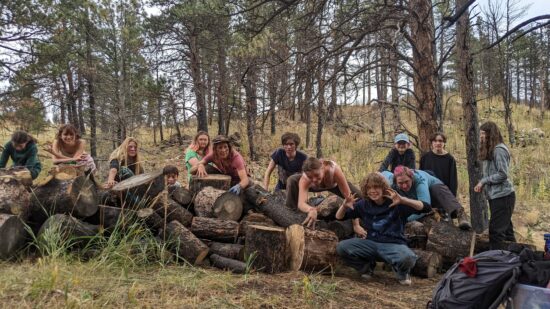New Vista CAP students contemplate methods and themes surrounding fire while trying to build their own palm-sized fires. Written by Field Instructor Ruthie Cartwright.

Their task had been simple: clear a small area of all flammable material, place a rock at its center, and build a small, palm-sized fire on the rock. The catch? They all get only one match and just one chance to see if it will light.
I was first given this initiative in the wet and wild woods of West Virginia. Given the materials and the atmosphere of the dry Colorado summer, the question I asked these students changed, from “Can it light?” to “Did you create a fire that can sustain itself?
And as we gathered around each person’s individual fire to hear their story they were given their chance to light it, and then to sit with it, to tend it until it went out of its own accord. They were asked: “How did they make it? Why did they make it that way? What was working? What would they do differently?” And as each student got to speak to their fire, I saw its light and energy reflected in their eyes.
Fire, we learned, is just like any other being. It needs a solid start in the world. Fire needs to be properly fed, have structure, and be given the space it needs to breathe so that it can thrive. Some student’s fires were given great material to start with, like a big bundle of tinder, but with nowhere to go. Others had great material, but it was so compacted that the fire could hardly move. And some were asked too much too soon; asked to jump right from pine needle to branch.
And it wasn’t just the materials that mattered, but the quality of the materials. We found that bark burned poorly, and that fire likes wood that snaps loudly with freshly made edges. Fire likes disturbance, and broken matter. We learned that order is important: from pine needles, to sticks the size of one finger, to two fingers, to three: increasingly feeding the Fire larger material as it gets stronger.

Fire, I explained, is a channel for light and warmth: it is the process of breaking down the photosynthesized energy of the sun that lives in wood into flame. It is a chance to let the sun’s light and warmth back into the world long after it has set. Fire, I argued, is with us always; it is simply our decision how, when, and if we want to manifest it.
We then discussed the different ways to make a friction fire, which is essentially the craft of creating flame with your hands, with no ignition source other than the energy inside your own body. You can use a hand drill, a bow drill, or flint and steel. Each student was given a second chance with their newfound knowledge of fire to make another one, and the challenge to build one together that night.
And through this process, they learned different principles of how to give fire what it needs. Fire is a being unto itself and a teacher, if you let it be. It is a powerful force, and a beautiful metaphor. Do you know fire? How do you channel your flame? What keeps your fire alive?
